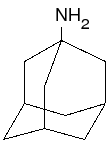A few months ago I spoke about Avian Influenza, or the Bird Flu (Dec. '04, pg. 85). The disease is related to human influenza but is not the same as the usual flu, which causes trouble in people on a yearly basis. Bird flu, however, poses a small but real threat to travelers and the population in general. If the virus is fully able to jump species, that is, readily infect people as well as birds, then it can rapidly spread through populations because humans don't have immunity to it. This is because this germ is not normally found in people and our immune systems are not primed to defend against it.
In the past several months there have been several deaths from Avian Influenza, all occurring in Southeast Asia. There are small but active outbreaks in Viet-Nam, Cambodia, Thailand and North Korea. Nearly all human cases have been seen in poultry workers and workers in live animal markets. There has been just a single case of suspected human-to-human spread in Thailand. There has not been a single case of illness in bird nor man in North America.
The head of the Centers for Disease Control & Prevention (CDC), Dr. Julie Geberding, stated that this germ has the potential to cause great trouble throughout the world, but neither the CDC nor the World Health Organization (WHO) has issued any travel advisories against travel to areas where cases have occurred.
For now, it is best to keep an eye on the situation but not get anxious. There have been fewer than 100 cases worldwide. Tourists are unlikely to be visiting commercial chicken farms, so the real risk for tourists is very, very low. There is no reason at this time not to travel for fear of this illness. Travelers should pay attention to news reports and advisories; if a serious outbreak occurs and the disease starts to spread, then it is time to change travel plans.
There is no human vaccine, although work is being done now to create one. There is no definitive treatment, either. It appears that the standard medications (Symmetrel and Flumadine) used against influenza do not work against Avian Influenza. It may be that Relenza or Tamifu help; the WHO has recommended the latter lot use in suppressing infection if used within 48 hours of the onset of flu-like symptoms.
There are basic habits travelers should develop to minimize the risk of respiratory illness when traveling. Most of these are so simple as to be overlooked, such as getting enough sleep before the flight, staying well hydrated, eating sufficient protein, washing hands and avoiding people who cough. Of course, one should not fly if already ill.
During a long flight, there is nothing wrong with wearing a face mask, particularly as you sleep, but it should be one that works, such as the OSHA-standard N-95 mask; surgical masks are not very protective. The electronic devices worn around the neck that are supposed to eliminate germs are also not very protective.
It is always wise to get the flu vaccine annually to prevent routine influenza, which is a quite serious threat, killing nearly 30,000 Americans annually. People over 65 and those with lung problems or other chronic illness ought to get the pneumonia vaccine as well.
If you become ill during or after your journey, it is not likely to be bird flu, but it is possible. The first two weeks after leaving a risk area is the most likely period to come down sick with this or other travel-related respiratory ailments. With influenza, the most common signs and symptoms to expect are fever, chills, muscle aches, coughing and trouble breathing.
Consultation with a travel medicine specialist is wise, particularly before traveling to the developing world. A list of qualified doctors and nurses in this field can be found on the websites of the International Society of Travel Medicine (www.istm.org) and the American Society of Tropical Medicine & Hygiene (www.astmh.org). The latter site also lists specialists who are qualified to diagnose and treat diseases from travel, especially from the developing world.
Dr. Spira is medical director of the Travel Medicine Center (131 N. Robertson Blvd., Beverly Hills, CA 90211; visit www.healthytravel. com).
Next month in this column, Dr. Larry G. Baratta offers helpful tips on avoiding diarrhea.
COPYRIGHT 2005 Martin Publications, Inc.
COPYRIGHT 2005 Gale Group



